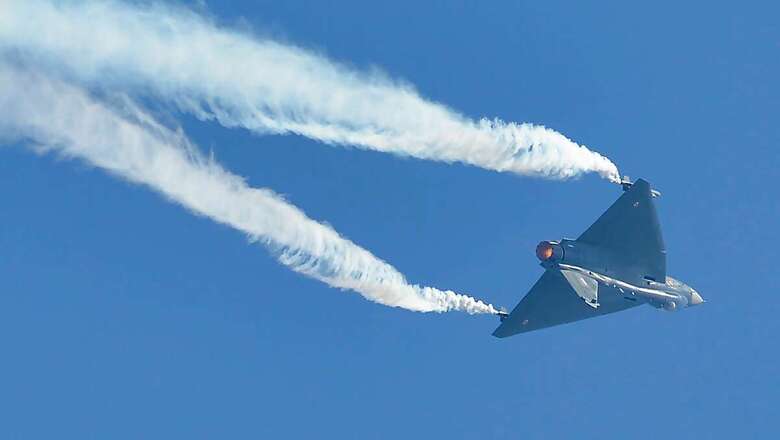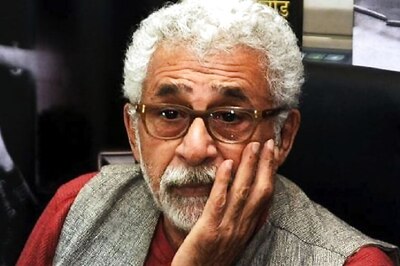
views
Twitter lit up on Wednesday with defence correspondents announcing that a “a major Make in India project is going to be announced today”. Many conjectured it could be the Tejas Mk1A contract for the IAF while some disbelievingly wondered whether the government had reached a decision on the short listing of the aircraft for the 114 fighter aircraft project. In the event, the CCS indeed cleared the long-awaited contract for 83 Tejas Mk1A. Is it a game changing occurrence, as some would like to believe, or is it an occasion that draws an exasperated cry of “finally, its done?” Let’s examine.
First, the good part. The IAF’s plan to partially make up its depleting squadron strength with the required number of Tejas would be met in the coming years. Second, that a major defence contract is going to an Indian entity is a welcome step; though it was in the works anyway, the fact remains that a number of second and third-tier industrial enterprises would now benefit from it, generating much needed employment too. Third, hopefully, Indian aviation R&D personnel would be enthused by the development and expedite the other projects in which the IAF has placed its full faith.
However, there is many a slip between the proverbial cup and the lip and HAL, as well as the Aeronautical Agency (ADA), have to pull out all stops to avoid repeating the torturous path of the Tejas project.
The Tejas saga is well known – the project being conceived in 1983 for a paltry Rs 560 crore, with the next two decades seeing its costs zoom up many times over. Despite the first flight of the prototype taking place on January 4, 2001, the first production Tejas Mk1 (that too with the Initial Operational Clearance) entered IAF service only on July 1, 2016; the first aircraft in the Final Operational Clearance configuration donned IAF colours later on May 27 last year. It needs to be emphasized that the capability desired by the IAF in its Tejas fleet is still elusive as the Mk1 aircraft (both IOC and FOC) that have been inducted are a stop gap arrangement since the version actually desired is the Mk1A that has many more desired features.
Let’s get one fact straight – the Tejas Mk1A is yet to fly! Yes, you read it right, as the first flight is planned only by the end of 2022, if all goes as planned; having said that, since the additional individual systems have been proven in a standalone mode, it should be feasible.
The CCS approval states that induction would start within three years of contract signing, so one hopes to see Mk1A entering squadron service by 2024. Given the abysmal track record of HAL one can only hope that its management and workers realise that the IAF has put all its eggs in their basket. The Air Chief is on record to say that in the coming years the IAF will procure the Tejas Mk2 version and the futuristic Advanced Medium Combat Aircraft (AMCA), with the Director of ADA promising the first flight of Tejas Mk2 in 2026 and of AMCA by 2031. Old-timers in the acquisition and operational field, having dealt with our R&D and DPSUs through their service career, will only shrug their shoulders and say, “We have grown immune to such pronouncements – let’s see it happening this time please.”
This resignation to reality, hopefully overcome to some extent now, is borne out by unhappy experiences, as brought out earlier. Additionally, the present Tejas production rate of HAL is only eight aircraft per year, with the induction of even the Mk1 never meeting promised timelines. Unless the production is accelerated to a minimum of 16 per year, it would take a minimum of seven to eight years for the 83 aircraft to enter the IAF. There are media reports of HAL having acquired land for a second production line, or the facility at Nasik to be utilised – but between land acquisition and an aircraft being towed out of a factory takes a few years.
Second, one wonders why there has been a delay in contract finalization. The fact that it took more than a year to bring down HAL’s quote of Rs 59,000 crore to Rs 48,000 crore speaks of unprofessionalism in pricing by a government agency when the buyer too is another government agency; this has only pushed back the induction of an urgently needed operational platform.
Third, even if production is accelerated, it needs to be remembered manufacturing is just one part of the operations matrix; keeping the machines flying, and flying for the next three decades at least, is an equally vital part. HAL’s product support, sadly, is nothing too rosy to talk about and has to improve by many orders of magnitude. Ask any IAF operations or maintenance person about his experience and he will cringe. Operational efficiency is dependent on serviceable aircraft available on the flight line and not on airframes parked in the hangar waiting for spares to arrive.
The flight line of a flying base is the heart and soul of the IAF. The shrill whine of aero engines mixes with the wonderfully pungent aroma of burnt aviation turbine fuel to generate a unique feeling. Nothing more pleases the blues than operating a flying machine carrying a Made in India tag – this writer fondly remembers the time he flew the Dhruv and the Light Combat Helicopter. Its time that all entities pull together to ensure that the mention of the Tejas evokes a feeling of pride four decades down the line.
(The author is Additional Director General, Centre for Air Power Studies, New Delhi. Views are personal.)
Read all the Latest News, Breaking News and Coronavirus News here



















Comments
0 comment